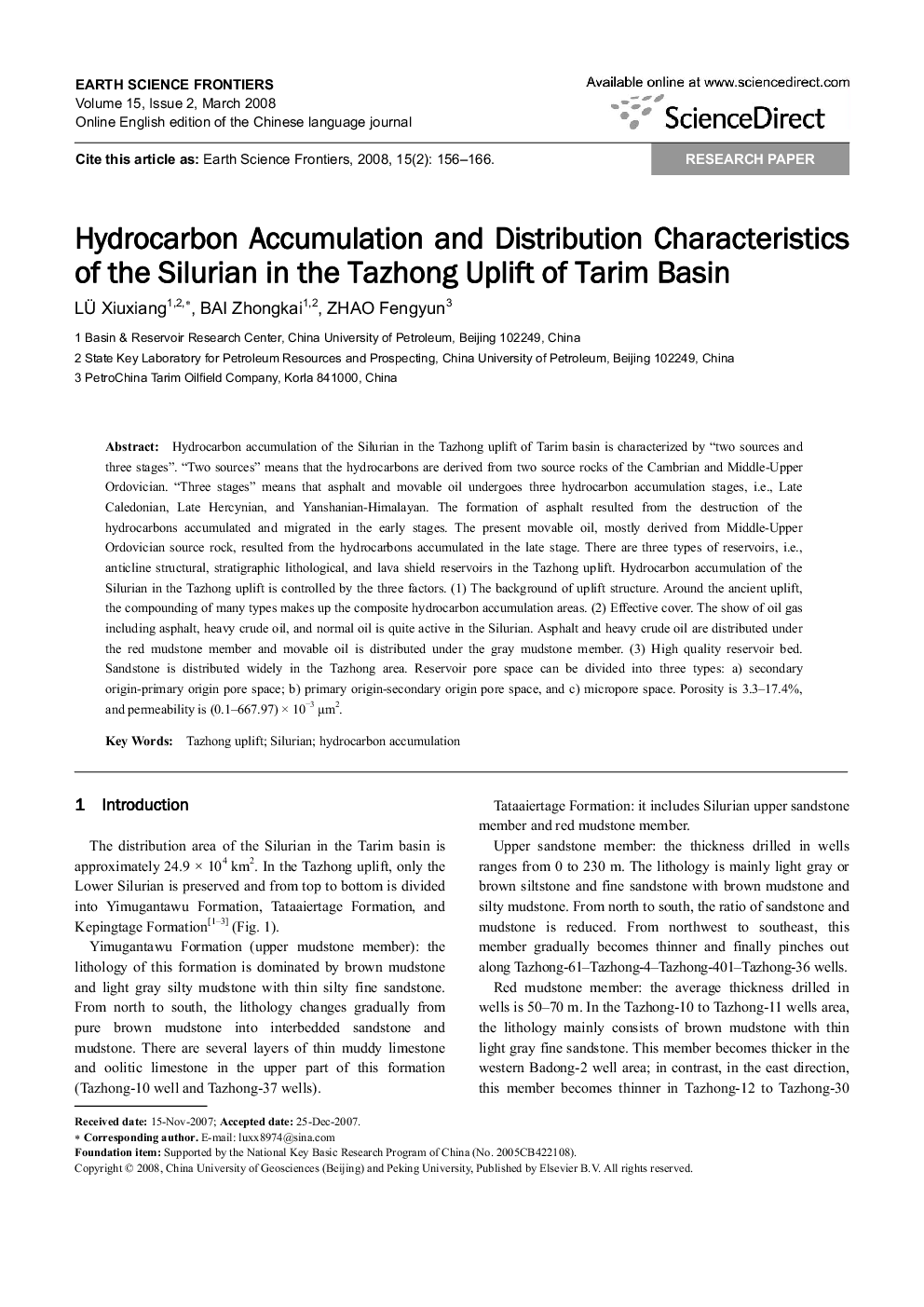| Article ID | Journal | Published Year | Pages | File Type |
|---|---|---|---|---|
| 4701642 | Earth Science Frontiers | 2008 | 11 Pages |
Hydrocarbon accumulation of the Silurian in the Tazhong uplift of Tarim basin is characterized by “two sources and three stages”. “Two sources” means that the hydrocarbons are derived from two source rocks of the Cambrian and Middle-Upper Ordovician. “Three stages” means that asphalt and movable oil undergoes three hydrocarbon accumulation stages, i.e., Late Caledonian, Late Hercynian, and Yanshanian-Himalayan. The formation of asphalt resulted from the destruction of the hydrocarbons accumulated and migrated in the early stages. The present movable oil, mostly derived from Middle-Upper Ordovician source rock, resulted from the hydrocarbons accumulated in the late stage. There are three types of reservoirs, i.e., anticline structural, stratigraphic lithological, and lava shield reservoirs in the Tazhong uplift. Hydrocarbon accumulation of the Silurian in the Tazhong uplift is controlled by the three factors. (1) The background of uplift structure. Around the ancient uplift, the compounding of many types makes up the composite hydrocarbon accumulation areas. (2) Effective cover. The show of oil gas including asphalt, heavy crude oil, and normal oil is quite active in the Silurian. Asphalt and heavy crude oil are distributed under the red mudstone member and movable oil is distributed under the gray mudstone member. (3) High quality reservoir bed. Sandstone is distributed widely in the Tazhong area. Reservoir pore space can be divided into three types: a) secondary origin-primary origin pore space; b) primary origin-secondary origin pore space, and c) micropore space. Porosity is 3.3–17.4%, and permeability is (0.1–667.97) × 10−3 μm2.
